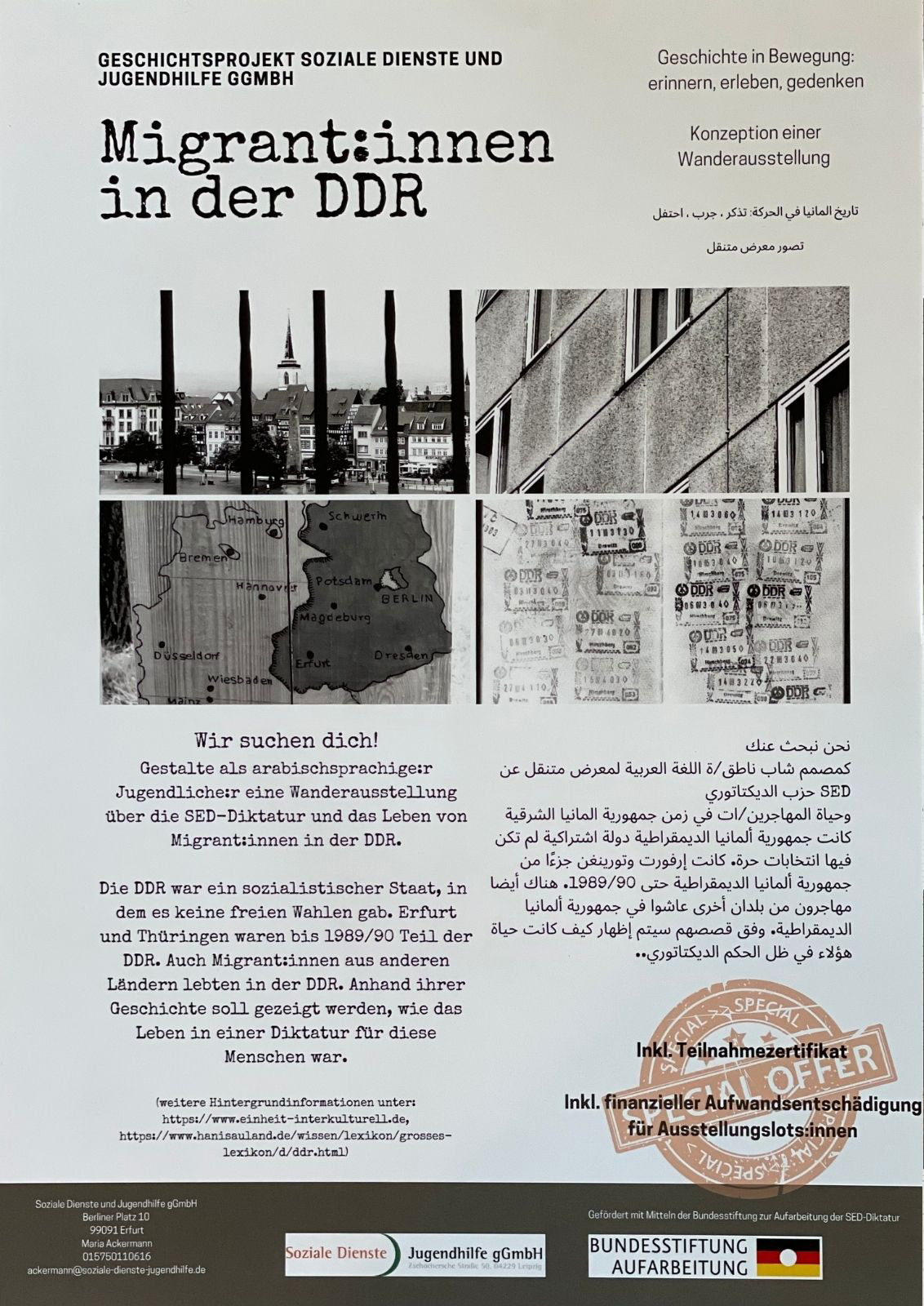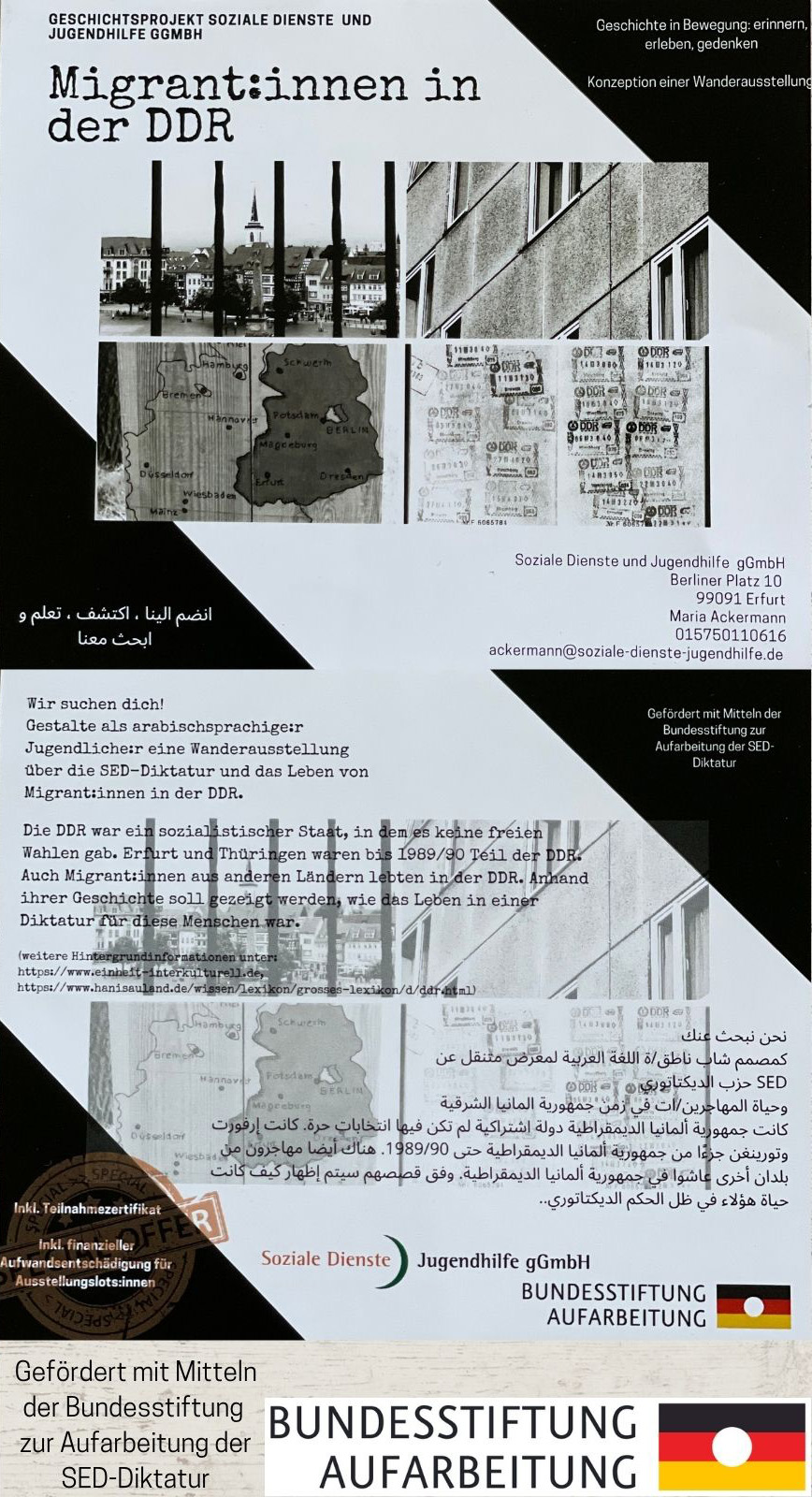Migrants in the GDR
The preparations are in full swing, a traveling exhibition wants to be developed!
Many preparatory steps have to be taken. Today is an opportunity to take a look behind the scenes. In addition to the organizational work, such as the search for participants and advertising of all kinds, it is also important to focus on the content.
The exhibition is to be developed by and with the participants. In order to reach interested youths and young adults hundreds of flyers and posters were printed and distributed. By sending out information emails, around 200 people in Erfurt now know about the existence of the project History in Motion: remember, experience, commemorate.
The traveling exhibition is to be designed by Arabic-speaking young people. They contribute significantly to the creation of the traveling exhibition and will be trained as exhibition guides in the further course of the project. During the development phase various steps are planned such as working with source material and literature research or conducting interviews with contemporary witnesses.
The next question is what should be conveyed by this exhibition? The GDR was a socialist state in which there were no free elections. Erfurt and Thuringia were part of the GDR until 1989/90. Migrants from other countries also lived in the GDR. Their stories will be used to show what life in a dictatorship was like for these people.
The aim is to create an opportunity to shed light on the history of migration and cultural diversity on the ground and to question developments, causes and mechanisms of action. Through the exhibition people with different cultural backgrounds are to be brought into conversation. This happens on the one hand in the conception phase in which the young people deal with the history of migrants in the GDR. On the other hand, the focus of the traveling exhibition offers visitors the opportunity to deal with the topic of migration.
The intercultural approach and the diversity of the population should be reflected in the traveling exhibition which requires openness and flexibility. Thus, the focus should not be on the frontal transmission of content but on the development of the exhibition at eye level with the participants.
They are invited to remember what their past was like. What experiences and memories do they bring with them as participants? In the following history becomes tangible by dealing with the topic of migrants in the GDR. What parallels can be drawn between the different times and political systems? Where are the differences? What are the consequences of history for today’s people living in the territory of the former GDR? And so we come to the last point: commemoration. The traveling exhibition provides an opportunity to pause and remember former migrants and their experiences.


